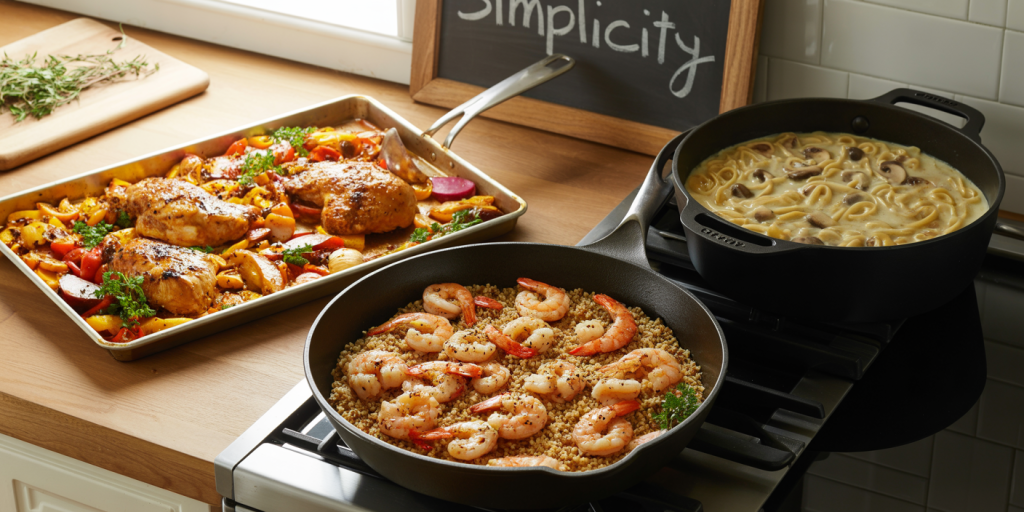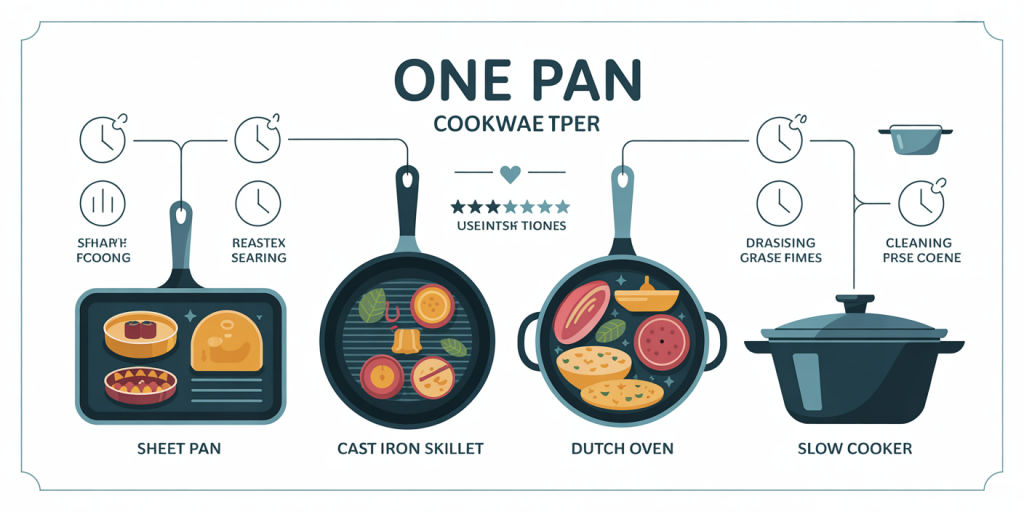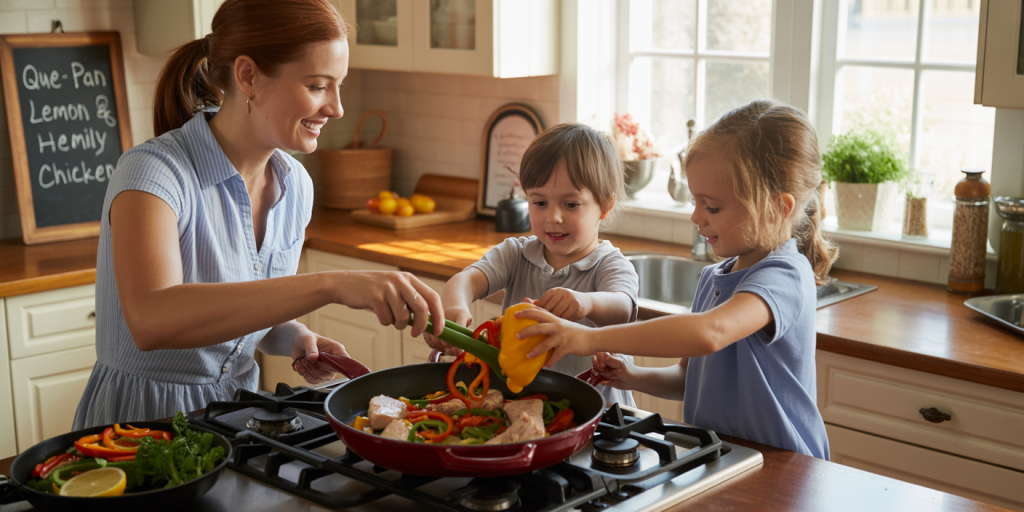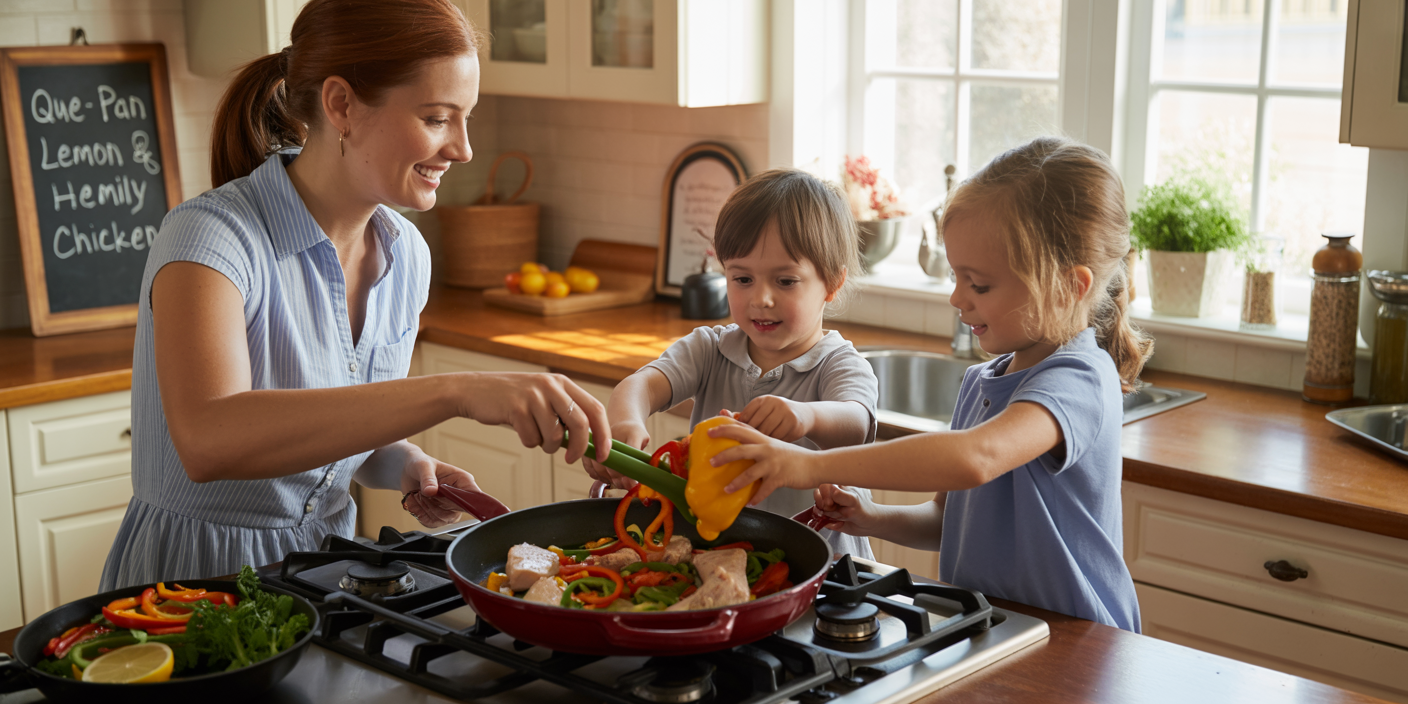In today’s fast-paced world, meal preparation often competes with numerous daily demands. Many home cooks and busy professionals seek solutions that minimize both cooking time and cleanup efforts without sacrificing flavor or nutrition. One-pan meals have emerged as a practical and efficient culinary approach that meets these needs, combining simplicity with versatility. By using a single cooking vessel to prepare entire meals, these dishes reduce the need for multiple utensils, combat kitchen clutter, and deliver satisfying results with fewer steps.

Statistically, according to a 2022 survey conducted by the Food Marketing Institute, approximately 45% of consumers reported that minimizing cleaning time influenced their meal preparation choices. This data supports the growing popularity of one-pan recipes among households aiming to balance healthy eating and convenience. Additionally, one-pan cooking adapts well to various dietary preferences—from vegetarian to high-protein diets—helping to maximize flavor and texture in every bite. This article explores the benefits of one-pan meals, practical methods to create them, real-life examples, a comparative breakdown of popular pans, and future trends shaping the way people cook.
Benefits of One-Pan Meals: Efficiency Meets Flavor
One-pan meals primarily shine through their ability to save time both during cooking and afterward. By consolidating the ingredients into one vessel—whether a skillet, sheet pan, or casserole dish—you eliminate repeated steps like transferring food between pots and pans or washing multiple items. This saves an estimated 20-30 minutes on average, according to culinary efficiency studies published in the *Journal of Culinary Science & Technology* (2023). Moreover, this approach reduces water and detergent usage, which aligns with environmentally conscious cooking methods.
Beyond efficiency, one-pan cooking encourages the melding of flavors. As ingredients cook simultaneously, they exchange aromas and juices, enhancing depth and richness. For example, roasting chicken alongside root vegetables on a sheet pan allows the drippings to infuse the vegetables, creating a cohesive dish with complex tastes. One-pot pasta recipes leverage this technique by boiling noodles in the same sauce volume that they eventually absorb, eliminating the need for draining and creating an intensely flavored, creamy sauce without added cream. This method consistently appeals to busy individuals who value nutritious, comforting meals without intricate preparation.
Types of One-Pan Meals and Their Appropriate Cookware
One-pan meal mastery starts with understanding the best type of cookware to suit your recipe and desired outcome. Popular options include sheet pans, cast iron skillets, Dutch ovens, and slow cookers. Each offers distinctive advantages depending on the cooking technique—roasting, sautéing, baking, or simmering. Sheet Pans: Ideal for roasting and baking, sheet pans allow for even heat distribution and perfect caramelization. For instance, sheet pan dinners featuring salmon fillets, asparagus, and baby potatoes can be cooked simultaneously at 400°F for 20 minutes, streamlining dinner prep. Their flat design makes them perfect for back-to-back meal prep and batch cooking. Cast Iron Skillets: Known for excellent heat retention and versatility, cast iron skillets excel in searing proteins and sautéing vegetables. Recipes such as skillet chicken with garlic and mushrooms showcase how one pan can handle multiple stages without losing temperature stability. Dutch Ovens: Enamel-coated Dutch ovens are great for braises, stews, and one-pot pasta dishes. Their heavy lids trap moisture, creating tender, flavorful meals like beef stew with root vegetables, or one-pot chili. Slow Cookers: Slow cookers harness time to develop deep flavors with minimal active cooking. A slow cooker chicken and vegetable casserole is a one-pan meal that thrives on unattended simmering, freeing up time during the day.

The choice of cookware substantially influences cooking times, textures, and clean-up ease. Home cooks often keep a variety of one-pan essentials, enabling diverse and convenient meal planning.
Practical Examples of One-Pan Meal Recipes
Incorporating one-pan meals into your routine can be as simple as following dependable, tested recipes. Consider the following real-world examples: Sheet Pan Chicken Fajitas: Marinated chicken breast strips, bell peppers, and onions tossed with fajita seasoning and roasted on a sheet pan. Ready in under 30 minutes, this recipe requires only a cutting board, knife, and baking sheet. Cleanup is limited to washing the pan and utensils, which is far less than traditional stovetop fajitas. Skillet Shrimp and Quinoa: A quick sauté of seasoned shrimp with garlic and spinach combined with pre-cooked quinoa. Everything finishes cooking in the skillet within 20 minutes, maximizing flavor layering and minimizing dishes. The skillet’s heat retention helps maintain temperature while serving. One-Pot Creamy Mushroom Pasta: Combining pasta, broth, mushrooms, and herbs in a Dutch oven results in a rich, creamy texture without an extra colander for draining noodles. The starch released during cooking naturally thickens the sauce.

These meals have been vetted by culinary professionals for taste and practicality. They demonstrate the adaptability of one-pan goods for different occasions, such as weeknight dinners or leisurely weekend lunches.
Comparative Table: Popular One-Pan Cookware Features
| Cookware Type | Best For | Heat Distribution | Clean-Up Difficulty | Average Cooking Time | Price Range | Versatility |
|---|---|---|---|---|---|---|
| Sheet Pan | Roasting, Baking | Moderate | Easy | 20-40 mins | $15 – $50 | High – batch meals, roasting |
| Cast Iron Skillet | Searing, Sautéing, Baking | Excellent | Moderate (seasoning) | 10-35 mins | $20 – $80 | Very High – many cooking types |
| Dutch Oven | Braising, Stewing, Baking | Excellent | Moderate | 40-120 mins | $50 – $150 | High – slow cooking, baking |
| Slow Cooker | Slow cooking, Casseroles | Uneven* | Easy | 4-8 hours | $25 – $100 | Moderate – unattended cooking |
*Slow cookers cook via indirect heat; heat distribution is slower but consistent over time.
This table serves as a guide when choosing cookware, helping cooks weigh cleaning ease, cooking duration, and budget. Investing in versatile, durable cookware pays off by enabling numerous one-pan meals that simplify kitchen routines.
Real Case Study: How One Family Transformed Weeknight Dinners
Emily Roberts, a working mother of two from Chicago, shared her experience transitioning to one-pan meals to handle her demanding schedule during the pandemic. Previously, Emily’s household suffered from lengthy cooking and cleaning times, often eating out or choosing less nutritious convenience foods. Upon adopting one-pan meals, she reported a 35% reduction in overall kitchen time, saving approximately 90 minutes weekly.
Emily credits sheet pan recipes like roasted chicken thighs with vegetables and skillet dishes such as sautéed sausage and peppers for improving family dinners both in taste and variety. She also notes that fewer dishes encourage more family involvement, as her children can participate in seasoning and plating without complex prep work. The appeal of one-pan meals is echoed by many families seeking balance between health, taste, and convenience.
Future Perspectives: One-Pan Meals in the Evolution of Home Cooking
Trends in the culinary world suggest one-pan meals will continue evolving with technology and consumer preferences. Advances in cookware materials, such as non-stick ceramic coatings combined with stronger, lighter alloys, facilitate more even cooking and easier cleaning, enhancing the one-pan experience. Smart kitchen devices integrating temperature regulation and timers allow cooks to safely multitask, further reducing active kitchen time.
Moreover, grocery retailers and meal kit services increasingly offer curated one-pan meal kits with pre-measured ingredients, encouraging adoption by novice cooks. According to a 2023 market analysis by IBISWorld, the ready-to-cook meal kit segment grew by over 15% annually, with one-pan meal kits a significant driver due to their practicality.
Sustainability will also shape the future, as one-pan meals use fewer resources: energy, water, and detergent, aligning with global goals for reducing household environmental footprints. Combined with rising health consciousness and urban lifestyles, one-pan meals represent a smart solution for nourishing, efficient cooking.
As busy lives demand greater efficiency, the one-pan method stands as a testament to innovation born out of necessity—a culinary trend that not only saves time and dishes but elevates the everyday dining experience.

Deixe um comentário